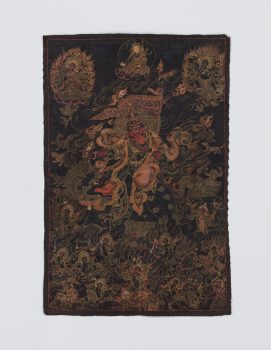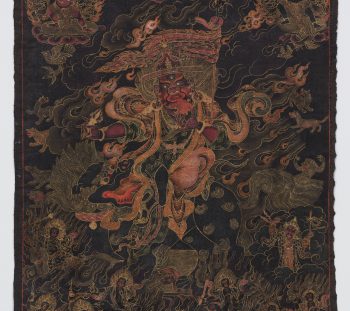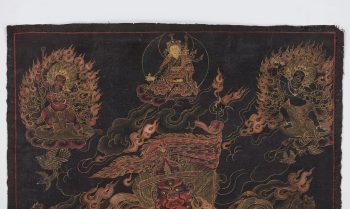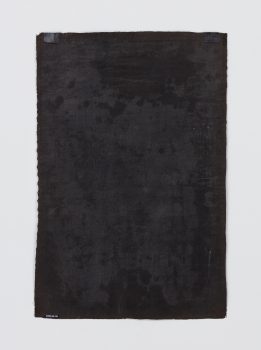Kham Region, Eastern Tibet
19th century
A vajra is a ritual scepter used in tantric practices and an attribute of tantric masters and deities. It generally symbolizes method, the male aspect of enlightenment.
Kham Region, Eastern Tibet
19th century





Dorje Lekpa is an oath-bound protector originating in Tibet who was converted from his destructive behavior by Padmasabhava. The figures above him monitor him to ensure that he maintains his vows. Although Dorje Lekpa likely functioned as the protector of a particular geographic region, he has become prominent within Tibetan and Himalayan Buddhism, and a special guardian of the revealed treasure (terma) tradition.Black background paintings such as this are traditionally reserved for wrathful deities. Energetic outlines in gold and red emphasize the artist’s brushwork mastery and are typical of this format. One remarkable feature of this painting is Dorje Lekpa’s silver teeth, to catch the flickering light of butter lamps in the dimly lit special chapels dedicated to protector deities.
A kind of energy that can be used, individually and collectively, to effect change.
Prescribed practices that carry symbolic meaning and value within a specific tradition and are intended to attain a desired outcome. Rituals are usually done as part of a ceremony or regular routine.
Protectors of Buddhist teachings who destroy obstacles that impede the path to enlightenment. The more frightening and gruesome their appearance, the greater their power.
Today, Tibetans primarily inhabit the Tibetan Plateau, situated between the Himalayan mountain range and the Indian subcontinent to the west, Chinese cultural regions to the east, and Mongolian cultural regions to the northeast. During the 7th to 9th century, Tibetan rulers expanded their empire across Central Asia, and established Buddhism as the state religion.
Get the latest news and stories from the Rubin, plus occasional information on how to support our work.